The little French marigolds (Tagetes patula) that I planted this spring are about at their best. Their flowers are open and few are beyond flowering, maturing seeds.
 |
| French marigolds, Tagetes patula |
Red birds in a tree (Scrophularia macrantha), a perennial, has been flowering heavily for more than a month. They are so lovely!
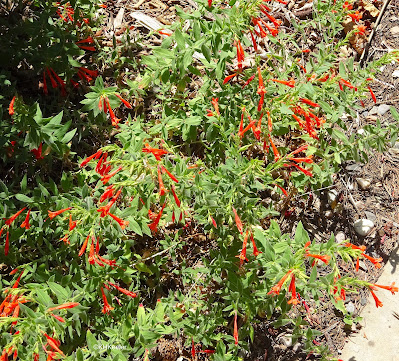 |
| Red birds in a tree, Scrophularia macrantha |
A sign of the well-advanced season is that the tiny stiff goldenrod (Solidago rigida) shoot I transplanted in May is now flowering. I didn't expect it to get big enough to flower this year.
 |
| stiff goldenrod, Solidago rigida Just the one stalk, but flowering |
Other plants are well-advanced in making seeds.
Here you see the red cosmos (Cosmos bipinnatus) flowers, but if you look closely, there are seed heads on the cosmos plant too. The white flower heads are carrots (Daucus carota), with a few flowers still open but most well on their way to being seeds. And, the red balls across the background are asparagus fruits (Aspargus officinalis).
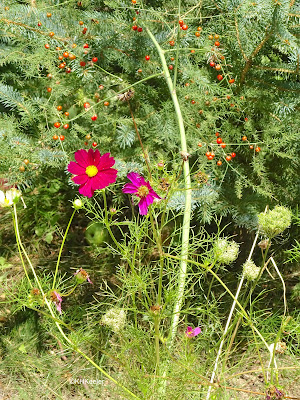 |
| Growing season is ending; more developing seeds than open flowers or buds in this picture |
 |
| silver maple with seeds |
and the apple tree (Malus domesticus) is heavy with fruit
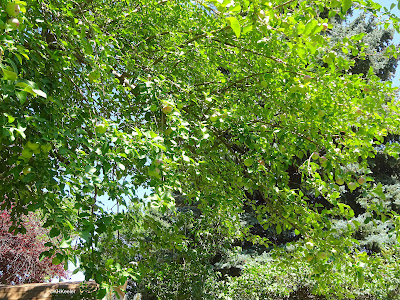 |
| Apples on the apple tree are turning red |
Apples are falling onto the ground, pleasing the yellow jacket. Many had already been bitten by a bird or squirrel.
 |
The four o'clock (Mirabilis jalapa) is still opening flowers, but I harvested a dozen ripe seeds yesterday and there were more on the ground.
 |
| four o'clock, Mirabilis jalapa |
High summer is also the peak time for insects, which enjoy the warm temperatures. I took this photo of the stiff goldenrod for the red brown beetle on the left, but also photographed three other flower visitors. Look carefully.
 |
| insects on stiff goldenrod |
I planted the squashes (Cucurbita species) for their flowers and have waited impatiently while the plants grew. But now I have beautiful squash blossoms each morning. The smaller plants are from the same squash which I grew last year. I think, being crowded, they didn't get anywhere near as much water as the big one did. But they grew and now the first of them is flowering.
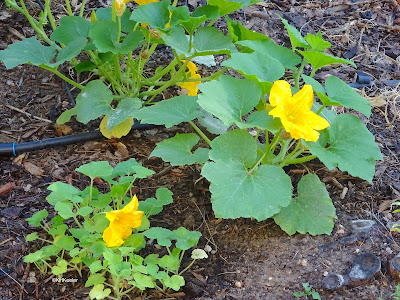 |
| squash blossoms |
The morning glories are the same story. I put out a bunch of seeds in June hoping they'd spread to cover the space left open, where three yews were removed. For weeks I watched as they grew, were eaten by the local rabbit, and grew again. Now, finally, every morning there are beautiful blue flowers. (Probably heavenly blue, Ipomoea tricolor, but I saved these seeds long ago, labeled only Ipomoea.)
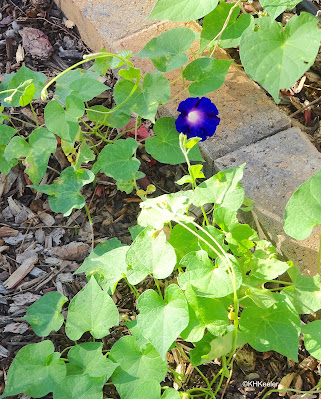 |
| morning glory, Ipomoea |
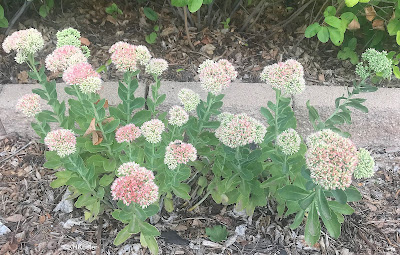 |
| stonecrop, Hylotelephium spectabile |
 |
| rabbit brush, Ericameria nauseosa Buds but no open flowers (they will be bright yellow) |
If you are not already doing it, celebrate midsummer before it is gone. Plants that struggled earlier are at their best, flowering is dramatic. It won't be long before cold weather sends the insects into hiberation, the perennials down into their roots, and kills the annuals. Enjoy big leaves and bright flowers!
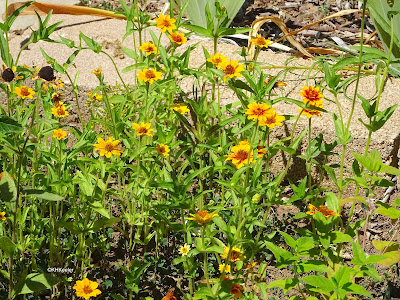 |
| Annual zinnias (Zinnia elegans), as big as they're going to get and in full bloom |
More at awanderingbotanist.com
Join me on Facebook: https://www.facebook.com/AWanderingBotanist
No comments:
Post a Comment